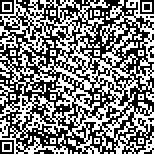| 摘要: |
| [摘要] 目的 了解戴用下颌前移口腔矫治器后阻塞性睡眠呼吸暂停疾病(OSAD)患者的睡眠结构变化。方法 选取行下颌前移口腔矫治器治疗的OSAD患者61例,接受口腔矫治器治疗前后均行多导睡眠图检查。将患者分为治疗后成功组52例及不成功组9例,对两组治疗前后的睡眠分期比率及疗效进行比较。结果 成功组治疗前后S3、AI、HI、AHI、LSpO2、最长呼吸暂停时间比较差异有统计学意义(P<0.05)。不成功组治疗前后AHI、最长呼吸暂停时间比较差异有统计学意义(P<0.05)。两组治疗后呼吸参数AI、AHI、LSpO2比较差异有统计学意义(P<0.05)。结论 戴用下颌前移口腔矫治器治疗成功的OSAD患者深睡眠百分比略有增加。 |
| 关键词: 阻塞性睡眠呼吸暂停 口腔矫治器 睡眠结构 睡眠分期 疗效 |
| DOI:10.3969/j.issn.1674-3806.2018.11.04 |
| 分类号:R 783.9 |
| 基金项目:广西医疗卫生适宜技术研究与开发项目(编号:S201422-06) |
|
| Changes in sleep structure in patients with obstructive sleep apnea after wearing an oral appliance |
|
HUANG Min-fang, ZHOU Yan, LIU Jian-hong, et al.
|
|
Department of Orthodontics, the People′s Hospital of Guangxi Zhuang Autonomous Region, Nanning 530021, China
|
| Abstract: |
| [Abstract] Objective To study the changes in sleep structure in patients with obstructive sleep apnea disorder(OSAD) after wearing an oral appliance. Methods 61 OSAD patients receiving oral appliance therapy were performed polysomnography before and after the treatment. The patients were divided into success group(52 cases) and failure group(9 cases). The percentages of sleep stages were compared before and after treatment in the two groups and the clinical effect was compared between the two groups. Results In the success group, there were significant differences in S3, AI, HI, AHI, LSpO2 and the longest time of apnea before and after treatments(P<0.05). In the failure group, there were significant differences in AHI and the longest time of apnea before and after treatments(P<0.05). There were significant differences in the respiratory parameters of AI, AHI and LSpO2 between the success group and the failure group after treatment(P<0.05). Conclusion The percentage of the patients with successful treatment for OSAD increases slightly after they wear the oral appliances. |
| Key words: Obstructive sleep apnea(OSA) Oral appliance Sleep structure Sleep stage Clinical effect |

